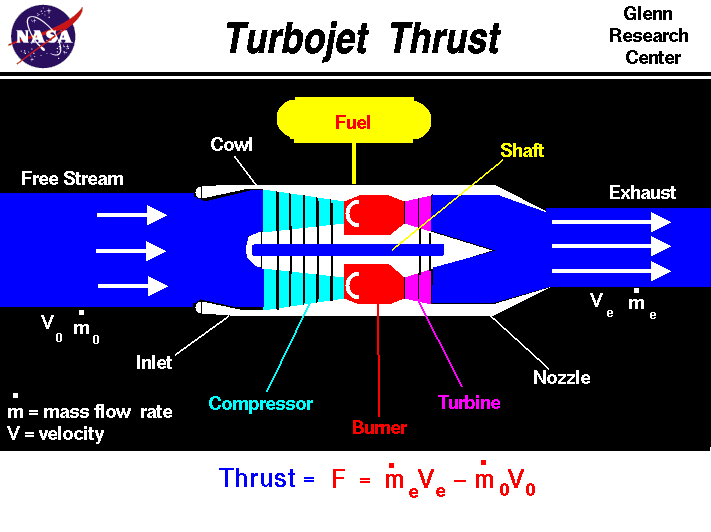ORIGINAL: rctech2k7
I agree, it’s really complicated to determine parameters of an engine, because it takes time and some guts to analyze thermodynamics process. To be practical I just used value on the output side of an engine and get comparison between the test result. It also eliminate other variable including constant... BTW, I've got mistake here, I should consider intake airflow because in reality air accelerates around the turbine and becomes free stream. So even the engine is on a test stand it has airspeed when it's running.
Here's the formula for Thrust from
http://www.grc.nasa.gov/WWW/k-12/airplane/turbth.html so we can solve it again.

BTW, rctech2k7 is a short for RCTech2007. Rctech was taken when I signed up but since I started in RC on year 2007 I used 2k7, where ''k'' is derived from a technical prefix kilo.
Good to know that we have someone here with degree of Physics, very interesting... You might help us about adiabatic expansion. BTW, my background is electrical engineering. What I've also learned makes me to appreciate the network and technical part of this hobby specially the high energy performance of our jets, flight control system, etc...
Let's go back to the topic, I tried to approximate using this formula and it's almost the same although the fuel consumption might change it slightly when running at low air density where mass flow to the exhaust will increase...
I agree with Tim on this.
The above pic is great example of "eye candy." Sure... the formula may be sound... but there is no way to measure any of that without expensive, high-end test equipment. Let's just look at the thrust end. How are we supposed to measure the velocity? It's very hot, so we would burn ourselves in a "Garage" situation. Also... most of our engines are making thrust in the supersonic range. (+1000 MPH) So... I don't know about you... but my little kestrel wind gauge wont' go that high. (lol)
To try to calculate things is just too hard. If you guys want a generalized equation... then build a test rig, and test as many engines as you can at sea level.... then re-test them at 2000 MSL, and 4000 MSL. Also... we will need the data on LL and HH conditions at those altitudes. At that point, we can take the data, and build a equation that fits the curve.